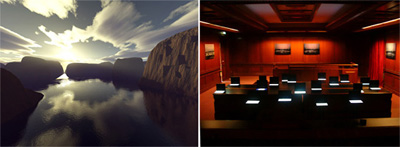
Every two years, the International Symposium on Electronic Art (ISEA) lands in a different world city, drawing thousands of new media scholars and artists together and engaging the local community. Two rounds ago, in 2004, ISEA started on a cruise ship that sailed (ok, partied) from Helsinki to Stockholm before delivering participants in Tallin, Estonia. In 2006 ISEA came to San Jose, California, where it both gelled and collided with the Silicon Valley scene, inaugurating the annual Zero1 festival. This year the events leapt across the Pacific to Singapore, a small country with a huge media culture. From July 25th-August 3rd, the "world's premier media arts event for the critical discussion and showcase of creative productions applying new technologies in interactive and digital media" will present a range of exhibitions and public programs on five official themes: Locating media, Wiki Wiki, Ludic Interfaces, Reality Jam, and Border Transmissions. The panels and keynotes within this theme--delivered by many of the biggest names in the field--consider the current state of new media production and reception, and cast an eye toward the role of Pacific Rim participants in driving this field. A cornerstone of the festival is the main exhibition, installed at the National Museum of Singapore and called simply "ISEA2008 Juried Exhibition." This year's show provides a glimpse into contemporary media art practices not only in the work selected, but in the process of it's organization. The exhibit includes sixteen artworks, many of which were made by international collaborative teams, that were curated via a competitive open call. The selected artists were invited to Singapore for residencies, where they began to flesh-out their ideas and work in new media, technology, and science labs on the campus of the National University of Singapore. The result is a collection of works that are just as innovative and scientifically proficient as they are beautiful, lending testament to the creative aspects of lab work and open collaboration. Check out the works online and catch a look at the future of intelligent art. - Marisa Olson
Image: Jason Wee (in collaboration with the Centre for Remote Imaging, Sensing & Processing), So Close the Desert Isle, 2008

